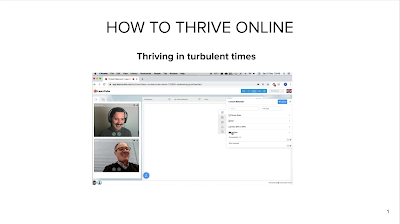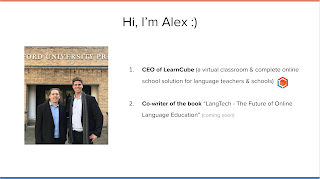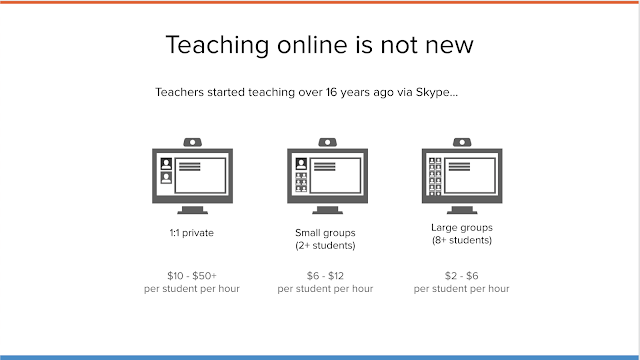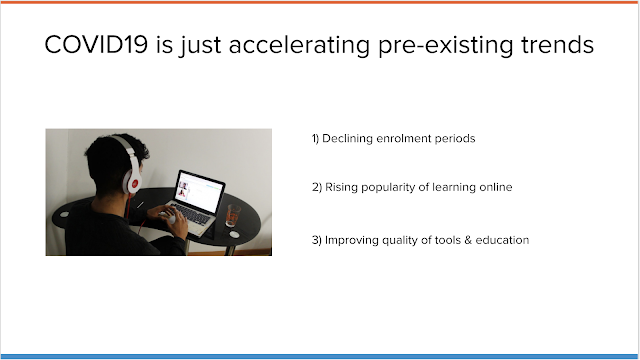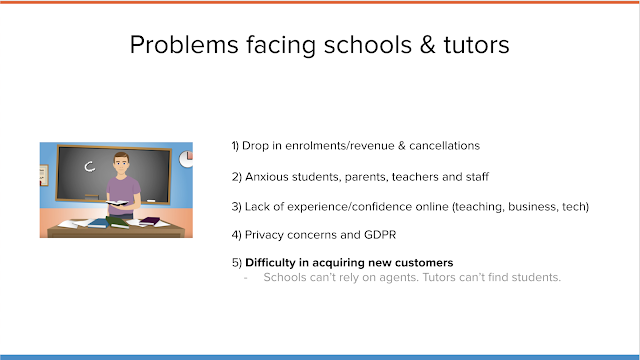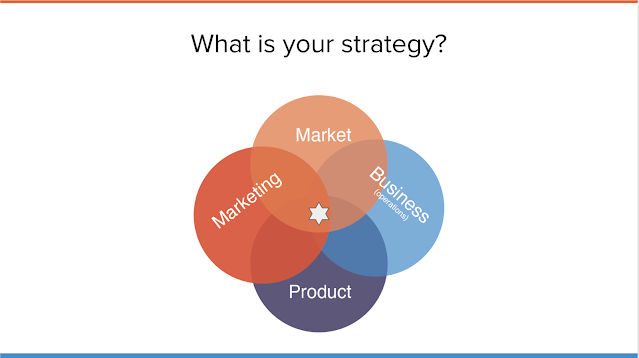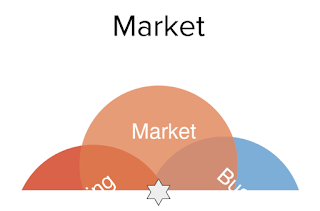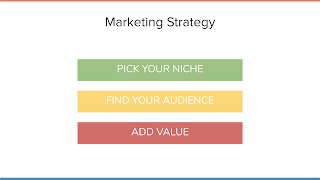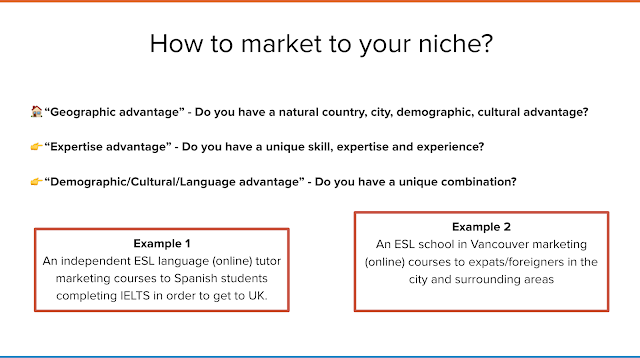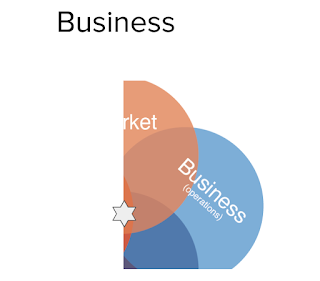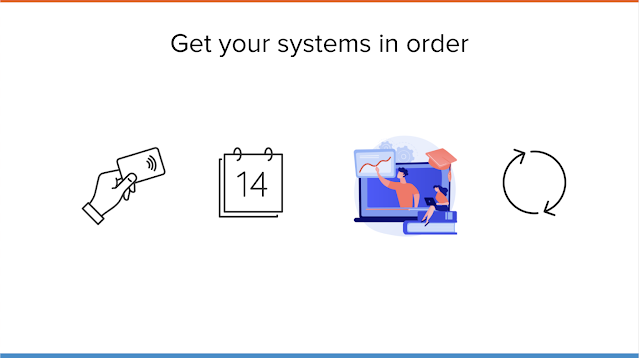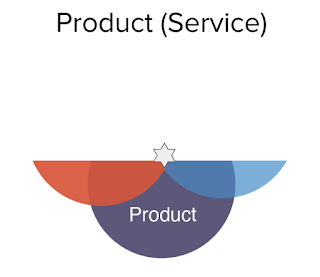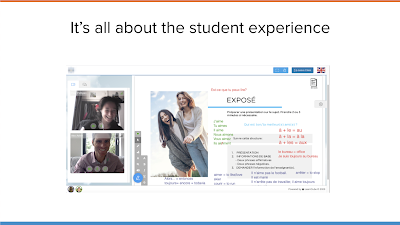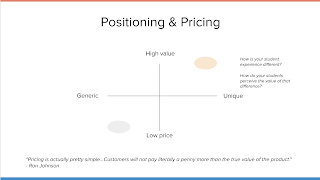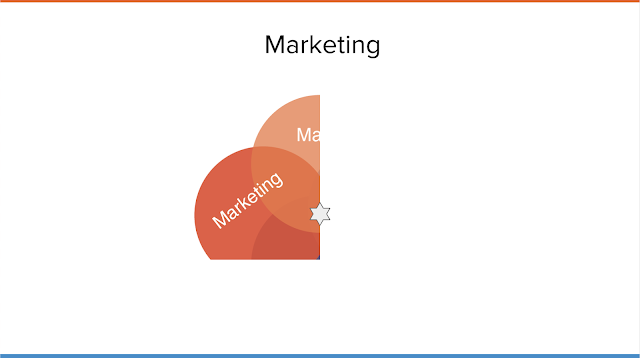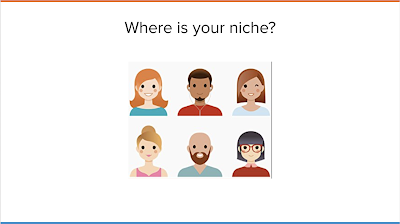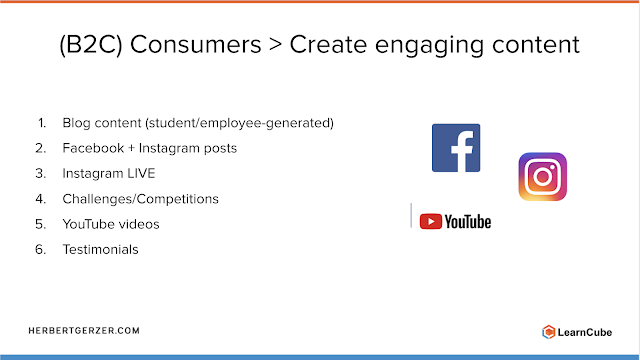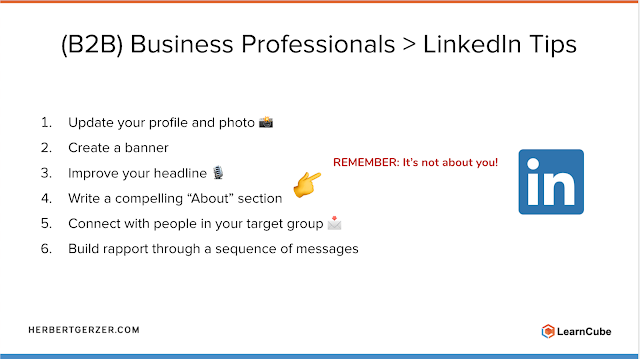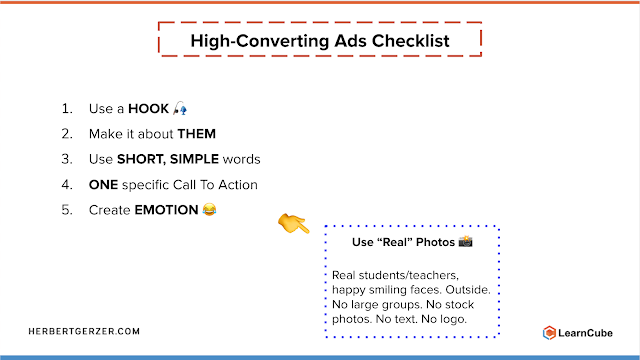Practical Marketing Advice for Language Tutors and Online Schools (Language Show 2020)
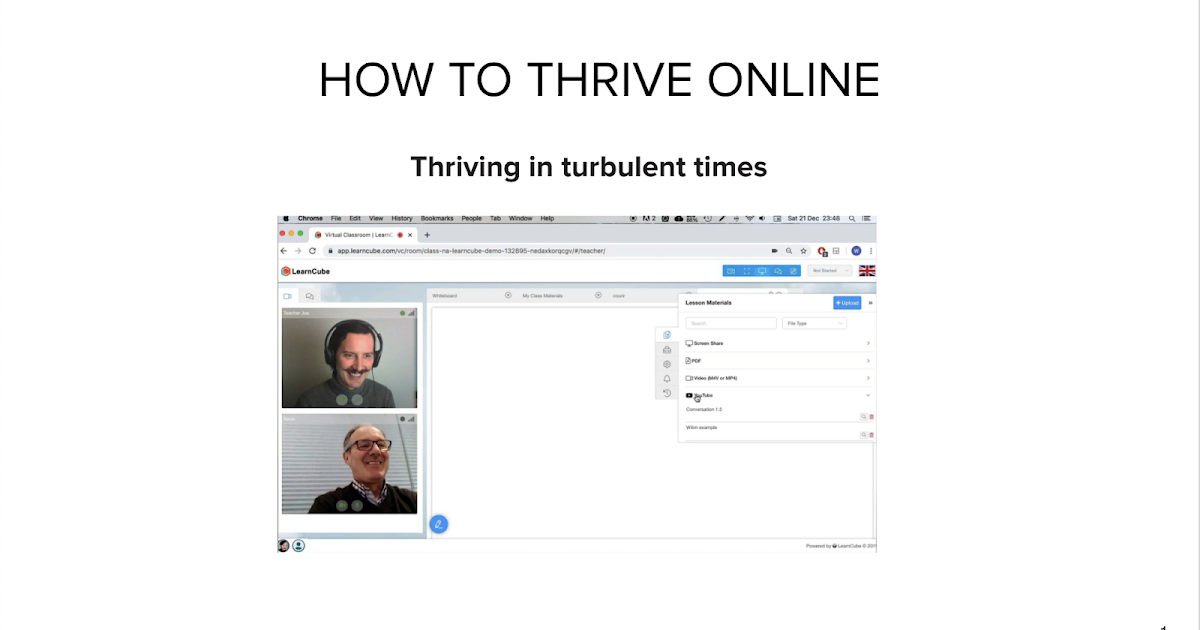
I spoke at the Language Show 2020 on how to build an online tutoring or online language business. We went through a presentation followed by a fun Q & A session where I'm following up with a separate post to answer them all. Big thanks to the 185 attendees who left feedback, of the people who rated my presentation, 138 gave it top marks with a 9 or 10 out of 10!
We had teachers and educators from across the globe: Vietnam, Romania, Italy and dozens of more countries. Individual tutors and many owners of startup & established tutoring companies joined us to learn to grow their online schools & businesses.
This presentation outlines the context and key strategies for tutors, language schools and tutoring companies to succeed online.
Why listen to what I have to say?
I'm speaking from experience having directly engaged with over 1000 language/academic tutoring companies through LearnCube (an online whiteboard, virtual classroom & online school software), I've co-hosted free weekly marketing Q & A sessions for tutoring companies since lockdown started and have been co-writing a book, Langtech, for the last 18 months (now published).
My goal in this presentation was to provide practical advice on how to grow an online language school or tutoring company.
I try to speak on what I know best, live online education with a teacher, so talk predominantly on this subject.
Now first things first...
Teaching online is not new
While teaching online might have felt new for millions of teachers and billions of students across the globe in March 2020 when COVID-19 changed the world, online tutoring is at least as old as Skype (2004) and older than the first CD-Rom based language courses emerging in the early 1990s.
Why does that matter?
You can't charge whatever you like (i.e. same price as what a student would pay to attend a physical language school), you can't compete directly with the already established multi-million dollar online language schools and you have to stand out somehow from the existing/new competition.
Many attendees were really curious by the pricing guidance I provided above and it really is just the pricing I've noticed from my work predominantly in the "Western" world. In some places like the U.S., it's not uncommon to charge $70+ for a single 1:1 session while using a tutoring marketplace, you might see prices between $8 to $30.
What I do find interesting is the wholesale shift of physical schools to online teaching. Many simply kept the exact same model, larger groups of 8 to 16 students, and applied that online with largely poor results. Selling group classes is much harder to do online and deserves an entire article (or library) just on the subject of how a school can improve the effectiveness of their online group classes.
COVID-19 has simply accelerated pre-existing trends
I'm not the only one to say this and won't be the last.
Before March, the enrolment periods in most language schools were declining, online language schools were growing and online tutoring marketplaces were flourishing. Improving technology and tech infrastructure have played a big role in the increasing importance of live online education because without stable internet connections and virtual classroom software, the live learning experience really does feel inferior to the in-person learning experience.
These changing trends caught out a lot of physical schools and in-person teachers. Many saw the tide coming in but when COVID-19 suddenly created a surge forward, they found themselves flat-footed, floundering and overwhelmed.
What I personally still feel quite sad by, and also passionate about improving, is the quality of live online education & tutoring. Many teachers have actually regressed in their teaching skills, lecturing vs tutoring/coaching/facilitating learning. Virtual classroom software and interactive whiteboards are available now which give teachers the tools they need to extend themselves professionally and thrive online.
However, on top of the online pedagogical shift, there is a difference between successfully transforming/evolving with online teaching vs maintaining a well-established physical language school.
The central ingredient of a growing business is acquiring new customers. That's what my presentation aimed to address.
What is your strategy for your virtual school or online tutoring service?
Think of your online business like baking a cake; you've got to use the right ingredients, choose the right combination of ingredients, get your settings just right and then build a process if you want to make lots of cakes.
I talk about the market, business (operations), product and predominantly about language school marketing strategy since that's why you're reading on.
Market Strategy
The first thing to identify is your market. Which customers are you going to focus on?
Choosing a market is one of the most important things that can do. Are you teaching B2C (consumers) or B2B (corporates/businesses)? Are you wanting to teach kids, teens or adults online? Are you focused on customers in the US, Germany or Japan?
These are the kinds of questions you must ask to succeed and ideally narrow your marketing focus on your first niche.
It's a hard choice, but as an online business owner, you need to pick your niche. Not "niches" (at least not until you've cracked your first one).
There is just too much competition.
Online marketing does not reward the "generalist" that can teach anyone anything. There are only three places on Google that matter - place 1, 2, 3. How often have you checked out business on page 2?
You need to stand out in your niche. The smaller is often better, particularly if you do not have a strong presence on the web, as there will be less competition.
Individual tutors, you might only need/want 20 great customers, so you're only needing a niche for 2.5e-9 of the world's population.
Online language schools and tutoring companies, you might only need/want 200 great customers to start with so might only need 2.5e-8 of the world's population ;) The hard thing for you is to stop thinking of all of the segments you were serving with you in-person business. You could rely on agents to send you those perfect customers. Your online presence is not strong enough to compete on General, Business, Kids English. You'll be best to still pick a niche, build a strong core and grow from there.
How to choose your niche?
Think...where do you have advantages? What is your unique combo?
For example, one of my favourite online language school customers is Fjarrskolen. They started by focusing purely on helping refugees in Sweden need to learn Swedish. They've grown their offering from there but they started with a strong core.
Most school owners are too "scared" to speak to their strengths and say "no" to opportunities (real or perceived). I admit this is really hard to do. No one wants to say no to business but by not saying no, we don't say YES to the business we really want and can deliver on.
Business Strategy
Once you've decided your market, you need to get your systems and processes sorted. It's not just helpful for you as a business owner but, it's what your customers expect.
They don't want to have to spend 20 minutes trying to figure out a way of buying from you. They don't want to have to email 10 x to organise the next class. They don't want to have to keep count of classes or be switching between a video-conferencing software and web whiteboard. While this is something the LearnCube Online School software does solve for organisations, there are alternatives and ways individuals can connect systems together.
The next part of your strategy to get right is your product or service...
Product Strategy
In language education or tutoring, that product/service is the tutoring session itself. The reason your customers buy your service is predominantly to solve a problem and/or improve an outcome. Maybe they want to speak English more confidently or they struggle to motivate themselves to learn alone, so want the added accountability of an online tutor.
Most teachers and tutors know this but don't always deliver for a number of reasons. Attitude, preparedness, timeliness, lesson materials and technology are all ingredients that make or ruin a tutoring session.
Don't forget the before and after-service; this counts as Product too. How you make it easy for students to find you, purchase sessions, book classes, do homework, give feedback and refer your business is all part of that "Product". My friend Thom and I talked about orchestrating a great student experience here if you're interested to watch this later.
Setting your price and market position
One way that you can enhance your product or service is by ensuring your product matches your market position and pricing. Just as it's hard for "Sloppy Joes Burgers" to attract wealthy lawyers living in Chelsea to pop in for a cheap bite to eat, it's hard if your positioning/pricing does not match your market (niche).
Decide what you'd like your brand and "brand personality" to be like. Does it resonate with your target market? Would your ideal customer when they see your website/Facebook page/product page be like... "Wow! This is exactly what I've been looking for." Or would they just keep surfing the net looking for alternatives?
When setting your price, I'd ask this question. What's the most you feel your average target customer would pay? I'd typically suggest you start your price there and do everything you can to make that price great value for money. It will mean you can invest in the highest quality experience and give you enough profit so you can invest that either into an even better experience, marketing and support. Note, setting your prices high doesn't mean you can't do pro-bono tutoring or provide big discounts to deserving students you want to help and can't otherwise afford your service.
If after testing, it's clear that's too much then, perhaps your target customer values "affordability" above other values. No problem, you know that after the first experiment and you can keep experimenting until you have the balance between price and quality right.
"Pricing is actually pretty simple...Customers will not pay literally a penny more than the true value of the product." - Ron Johnson
Marketing Strategy
Marketing to your niche
Where do your ideal customers hang out? This should tell you where to put your initial efforts.
Here are some ideas for those businesses targeting individual "consumers". Social media like Facebook, Instagram and YouTube are common "watering holes" for individuals. You'll need to understand the pages, people and groups your target market care about.
I've referenced my friend Herbert Gerzer in these upcoming slides. We have created some free videos together which you can find on our YouTube channel if you'd like to hear the full presentation on digital marketing for language schools and tutoring companies. Herbert knows his stuff with many years working as a digital marketing expert specialising in helping language schools and we love helping educators. Check out this video as a starting point where we share our ideas and give our proven, practical advice.
Marketing to professionals and corporates
If you're selling your services to businesses, the most obvious place to look for them is through LinkedIn in much of the Western world (Xing for Germany). This "professional" social media platform is very powerful but it's important to understand the "ground rules". This short video goes into more details if you're curious but the first thing to do is review your own LinkedIn profile - and make a great first impression.
Digital advertising for tutors, schools and educators
If you've set up strong foundations (social media, blog, website) then it may be the right time to advertise. There are lots of other creative ways to advertise but the one I'd start with because it helps you understand your customer better is Facebook.
There are plenty more tips but I've shortened Herbert's High-Converting Ads Checklist to 5:
- Use a hook to attract your target customer (like moths to a flame)
- Once you have their attention/curiosity, then focus your attention on them, their needs and desires.
- Keep your language short, simple, easy and fast to read
- At the end have just ONE call to action. What's the one thing you want them to do? Do a free trial? Fill out a form? Register? Join a group? How are you going to get their permission to contact them and show your value?
- Create energy and emotion. "People buy emotionally and justify logically."
Also don't forget Herbert's "never forget" tip: Use Real Photos! Real photos of your students, your teachers, your classroom, your experience. People are not going to believe in you or your school if they don't trust you.
I hope you've enjoyed reading this and learned a thing or two to help your business.
Let's keep up the conversation on one of our weekly marketing webinars for online language schools and online tutoring companies. Herbert and I would be glad to host you.
Email support@learncube.com for a free invite and don't forget to signup for a free LearnCube virtual classroom account if you haven't already joined the community :)
Popular articles
Be notifed of our new materials!
Ut enim ad minima veniam, quis nostrum exercitationem ullam corporis suscipit laboriosam, nisi ut aliquid ex ea commodi consequatur.

